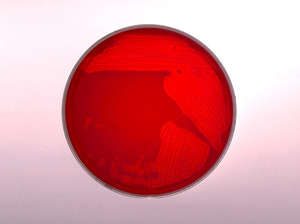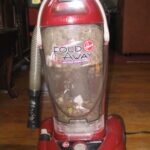As a former dry cleaner, I have the personal experience and knowledge to remove a blood stain successfully. A blood stain is quite easy to remove if it is fresh, but nearly impossible if set in. Any stain will sometimes set in during attempts to remove it. There is also some risk of damage to the fabric. Therefore, it’s important to know what you are doing before attempting to remove a blood stain.
All stains are categorized according to their chemical base.
Blood is a protein stain, as are all bodily fluids and raw meat juices. Cooked meat juices contain fat, making them a combination food grease and protein stain. To remove a protein stain in the dry cleaners, another protein is used. Dry cleaners use a specially formulated dry cleaning chemical made with albumin. At home, there are other methods you can employ.
Note: Blood is a bio-hazard.
If this is not your blood, use rubber gloves and protective eye wear. Many diseases are carried by the blood. Protect yourself from them by using extra caution when asked to remove a blood stain. To remove a blood stain, or any other stain, always start with the mildest method and work up to the more toxic and or bleaching chemicals.
It’s vital to test each method on an inside seam of the garment for colorfastness and durability. Use the methods in order, so as not to set the stain.
Method 1
Use a solid bar of bath soap. Wet a small portion of a washcloth and rub it across the soap to work up a lather. Use the soapy cloth to gently scrub the blood stain. If the blood stain is fresh this method should remove it quite easily. If the stain comes out, rinse with cold water and you are done. Do not rinse the item with water unless the blood stain is gone. A stubborn blood stain may not come out with the first method.
Method 2
Add a small amount of ammonia to the soap on the washcloth and scrub lightly again to remove any traces of remaining blood stain. There is a chance that this will not remove the stain. If that is the case, try the next method to remove the blood after rinsing the ammonia immediately and thoroughly with cold water.
Method 3
This attempt utilizes household hydrogen peroxide. Dry cleaners often use a more concentrated form of hydrogen peroxide for bleaching. Once the garment with the blood stain is air dried, hydrogen peroxide may be used as a bleach to remove the blood stain. Once again, test the garment for colorfastness and durability on an inside seam. If the garment does not pass the test, do not try to bleach it.
Household hydrogen peroxide can be applied directly to the stain. Results of this bleaching will be immediately apparent. If nothing happens immediately, the bleaching action of the peroxide can be accelerated by applying heat with a hair dryer. Do not apply heat without testing the item on an inside seam first. Once the stain has been removed, rinse the peroxide out immediately and thoroughly with cold water. Air dry before attempting the next method.
Method 4 – (Use on white and tested clothing only)
If all the above attempts to remove the blood stain have failed and the item with the blood stain is white, the last resort is diluted chlorine bleach. As always, test the garment on an inside seam before proceeding. Mix a cap full of bleach in 1 cup of water. Apply a small amount directly to the stain. Results should be immediate. Once again if nothing happens, use the hair dryer as a heat accelerator, after testing on an inside seam. Rinse the item immediately and thoroughly with cold water to remove all traces of bleach. If unable to remove the blood stain with bleaching, it is not coming out.
Please note: Although the author is a professional, and has advised you to use the utmost care, no method of stain removal is foolproof. There is always a chance that even the most careful stain removal methods may damage fabric. The author is not responsible for this damage.
More from Jaipi:
How to Remove a Mustard Stain
Save Money on Laundry and Dry Cleaning
Are Fabric Toxins Lurking in Your Kids’ Clothes and Bedding?







